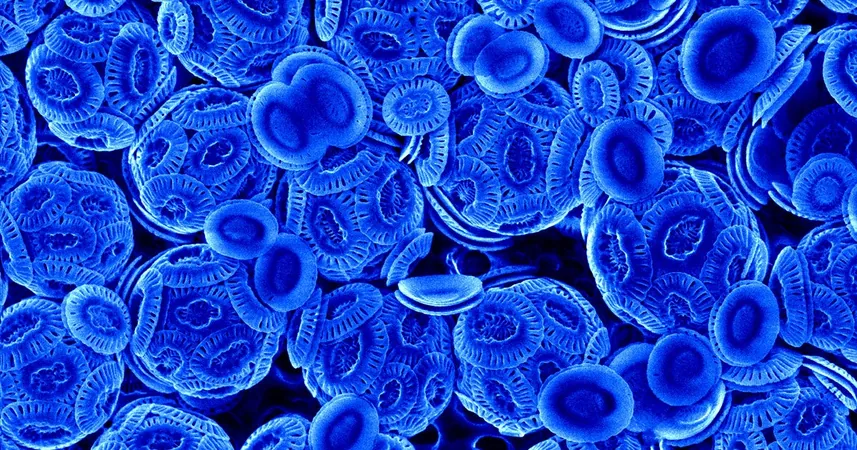
Mysterious Turquoise Glow in Antarctic Ocean Leaves Scientists Stunned!
2025-08-24
Author: Wei
Since the early 2000s, a dazzling turquoise patch has captivated and baffled scientists as it has emerged in satellite imagery over the Antarctic Ocean. But what lies beneath this captivating glow?
A Frozen Enigma Unveiled
Nestled just south of the calcite belt—a thriving region abundant with calcium carbonate and coccolithophores, tiny organisms known for their reflective shells—this mysterious patch was long thought too frigid to harbor such life forms. Yet, scientists are finally cracking the case of this marine anomaly.
New Insights From the Depths
In a groundbreaking study published in *Global Biogeochemical Cycles*, researchers took to the tumultuous ocean waters aboard a research vessel. Their mission: to gather detailed data at various depths, gaining insights that satellites alone couldn’t offer.
Senior Research Scientist Barney Balch from Bigelow Laboratory for Ocean Sciences highlighted the value of their research, stating, "Satellites only see the top several meters of the ocean, but our measurements dove deeper, revealing hidden surprises below."
Surprising Discoveries Beneath the Ice
Much to their surprise, the scientists discovered that coccolithophores do indeed thrive in these chilly waters, albeit in lower concentrations compared to the great calcite belt. Their research unveils a stunning view of how carbon cycles operate in this frigid environment.
A Plankton Showdown
The coccolithophores are locked in an epic battle against diatoms—another type of plankton that converts organic carbon into energy, crucial to the marine food web. Previously considered a no-man’s land, the area between these two plankton factions is enlightening researchers on their survival strategies.
Reflective Secrets Revealed
The study indicates that moderate concentrations of coccolithophores and their detached shells were observed stretching as far south as 60°S. However, the predominant cause of the region’s distinctive glow appears to be the shiny outer layers of diatom plankton scattering sunlight.
Implications for Our Planet
These findings are not just a scientific curiosity; they have significant implications for our understanding of global carbon cycles. Coccolithophores play a crucial role as a carbon sink, helping to mitigate atmospheric carbon levels.
Balch summed it up perfectly: "We're expanding our view of where coccolithophores can thrive and beginning to decode the patterns we see in satellite images of this rarely explored ocean region."
A New Frontier in Plankton Research
As we grasp more about the ocean’s depths, researchers are optimistic about the potential to leverage plankton to combat global warming. Could this be the key to a healthier planet?





 Brasil (PT)
Brasil (PT)
 Canada (EN)
Canada (EN)
 Chile (ES)
Chile (ES)
 Česko (CS)
Česko (CS)
 대한민국 (KO)
대한민국 (KO)
 España (ES)
España (ES)
 France (FR)
France (FR)
 Hong Kong (EN)
Hong Kong (EN)
 Italia (IT)
Italia (IT)
 日本 (JA)
日本 (JA)
 Magyarország (HU)
Magyarország (HU)
 Norge (NO)
Norge (NO)
 Polska (PL)
Polska (PL)
 Schweiz (DE)
Schweiz (DE)
 Singapore (EN)
Singapore (EN)
 Sverige (SV)
Sverige (SV)
 Suomi (FI)
Suomi (FI)
 Türkiye (TR)
Türkiye (TR)
 الإمارات العربية المتحدة (AR)
الإمارات العربية المتحدة (AR)